Deep in the annals of canine history, a breed emerges with a mystique as profound as its ancient lineage: the Chow Chow. Often described as a lion in dog’s clothing, this majestic creature captivates with its distinctive appearance and enigmatic personality. From its unique blue-black tongue to its dense, fluffy coat, the Chow Chow is a living testament to centuries of selective breeding and cultural significance. This article delves into the fascinating world of the Chow Chow, exploring its origins, characteristics, behavior, and its enduring relationship with humanity, offering insights for enthusiasts, researchers, and caregivers alike.
The Ancient Enigma: A Glimpse into Chow Chow Origins
The Chow Chow stands as one of the oldest and most genetically distinct dog breeds, a true relic from the ancient world. Its origins are firmly rooted in northern China, where evidence suggests its presence dates back thousands of years. This breed is considered one of the basal breeds, meaning its genetic makeup is very close to that of the wolf, indicating an early divergence from the canine ancestral tree.
Tracing the Ancestry
Archaeological findings and historical records point to the Chow Chow’s ancestors being utilized in China for a variety of roles, including guarding temples, hunting, herding, and even pulling sleds. Their robust build and thick coats made them ideal for the often harsh climates of their native regions. The breed’s isolation within China for much of its history contributed to its unique genetic purity and distinct physical traits.
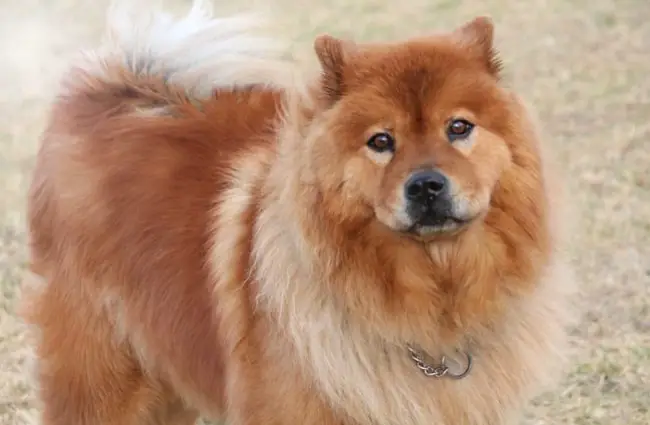
From Ancient China to Global Companion
While deeply ingrained in Chinese culture for millennia, the Chow Chow remained largely unknown to the Western world until the late 18th century. It was during this period that European traders and explorers began to encounter these remarkable dogs, often referring to them as “Chow Chows,” a pidgin English term that broadly meant “miscellaneous goods” or “curiosities” from the East. Their journey to global recognition was slow but steady, eventually earning them a place in homes and hearts worldwide, though their primary habitat remains the domestic environment.
Distinctive Features: More Than Just a Fluffy Face
The Chow Chow’s appearance is undeniably striking, setting it apart from almost every other canine breed. Its compact, sturdy body, often described as “square,” is covered in a profuse double coat that can be rough or smooth. The breed’s deep-set eyes, broad skull, and small, erect ears contribute to its characteristic “scowling” or “frowning” expression, which belies a generally calm demeanor.
The Iconic Blue-Black Tongue
Perhaps the most famous and intriguing physical trait of the Chow Chow is its unique blue-black or purple tongue. This characteristic is shared by only a few other breeds, such as the Shar-Pei, and is a definitive identifier for the Chow Chow. Unlike the pink tongues of most dogs, a Chow Chow’s tongue should be solid blue-black, with pink spots considered a fault in breed standards. The exact biological reason for this pigmentation remains a subject of scientific curiosity, though it is a harmless and natural trait.
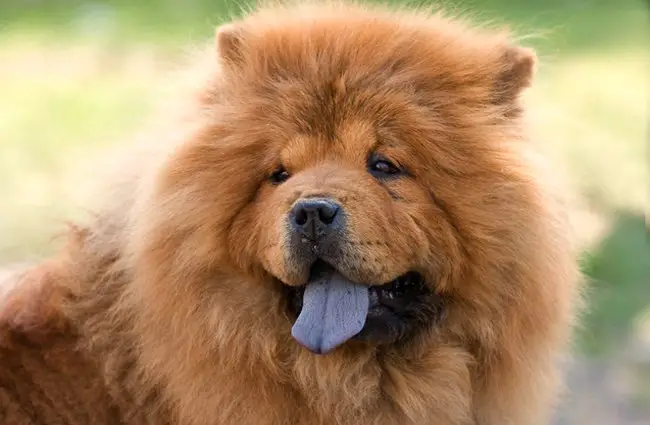
A Lion’s Mane and a Bear’s Gait
The Chow Chow’s dense ruff of fur around its head and neck gives it a distinct lion-like appearance, particularly in the rough-coated variety. This magnificent mane, combined with its sturdy build, contributes to its regal presence. Another unique physical characteristic is its stilted or “staccato” gait. This distinctive movement is due to the breed’s relatively straight rear legs, which limit the natural flexion seen in other dogs. This gait is not a sign of discomfort but rather a breed-specific trait that contributes to its powerful, deliberate stride.
Temperament and Interaction: The Chow Chow’s Unique Personality
The Chow Chow’s temperament is as distinctive as its physical appearance. Often described as aloof, independent, and dignified, this breed is not typically effusive in its affections. However, beneath this reserved exterior lies a profound loyalty and devotion to its chosen family.
An Independent Spirit
Unlike many dog breeds that thrive on constant human interaction and attention, the Chow Chow possesses a strong sense of independence. They are often content to observe rather than participate in boisterous activities, preferring a calm and predictable environment. This independence means they are not always eager to please, making training a task that requires patience, consistency, and a deep understanding of canine psychology. Early socialization is paramount to ensure they develop into well-adjusted adults, comfortable with various people and situations.
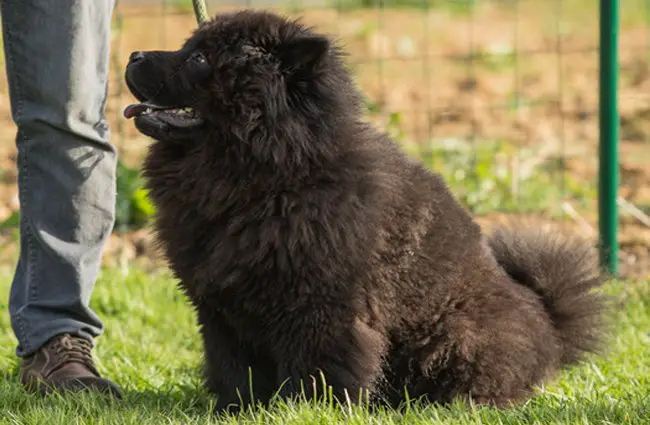
Loyalty and Guarding Instincts
Despite their aloofness, Chow Chows are fiercely loyal to their immediate family. They form deep bonds with their primary caregivers and can be protective of their home and loved ones. This protective instinct, combined with their imposing appearance, makes them excellent watchdogs. However, their guarding nature means they can be wary of strangers and other animals, necessitating careful introductions and supervision. Their contribution to human culture extends beyond companionship, as their historical roles as guardians and protectors are still evident in their inherent temperament.
Life in the Wild (or Lack Thereof): Where to Find a Chow Chow
For an animal lover hoping to find a Chow Chow “in the wild,” it is crucial to understand that the Chow Chow is a thoroughly domesticated animal. It does not exist as a wild species in any natural habitat. Its evolution has been entirely intertwined with human civilization, making it dependent on human care for survival.
A Domesticated Journey
The concept of a Chow Chow’s “habitat” is therefore primarily the human home. While their ancestors roamed ancient China, performing various tasks, modern Chow Chows are companion animals. They thrive in environments where they receive consistent care, proper nutrition, and mental stimulation. Their dense coat, while protective in colder climates, also means they are sensitive to heat and require indoor living, especially in warmer regions.
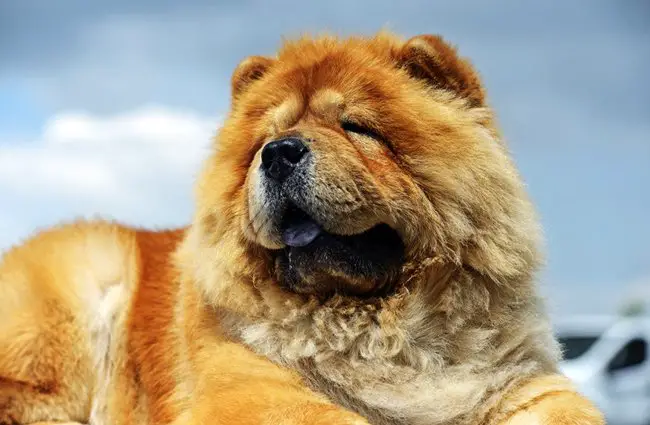
Responsible Acquisition
If one wishes to bring a Chow Chow into their life, the appropriate channels are through reputable breeders who prioritize health and temperament, or through rescue organizations and shelters. These organizations often have Chow Chows in need of loving homes, providing an ethical way to acquire one of these magnificent dogs. Attempting to find a Chow Chow “in the wild” would be akin to searching for a wild poodle; such an endeavor would be fruitless and based on a misunderstanding of their domesticated status.
Diet and Nutrition: Fueling the Majestic Chow
Proper nutrition is fundamental to the health and longevity of a Chow Chow. As an omnivorous domestic canine, their diet should be carefully managed to support their unique physiology and activity levels.
Essential Dietary Considerations
A high-quality commercial dog food formulated for medium to large breeds is typically recommended. This should be rich in protein from animal sources, with a balanced inclusion of healthy fats, carbohydrates, vitamins, and minerals. Due to their relatively lower energy levels compared to some other breeds, Chow Chows can be prone to weight gain if overfed. Portion control is essential, and treats should be given sparingly. Some Chow Chows may have sensitivities, so monitoring for any adverse reactions to specific ingredients is important. Consulting with a veterinarian to tailor a diet plan based on age, activity level, and individual health needs is always advisable.
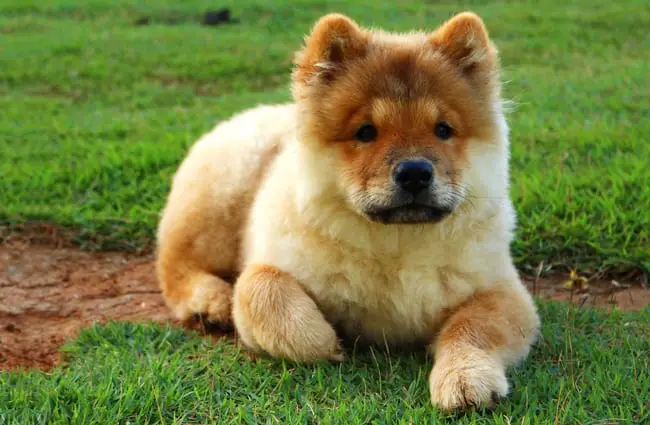
Hydration and Special Needs
Constant access to fresh, clean water is critical, especially given their thick coats which can make them susceptible to overheating. Some Chow Chows may benefit from diets designed for sensitive stomachs or those prone to allergies. Omega-3 fatty acids can be beneficial for skin and coat health, which is particularly important for a breed with such a dense fur. Any sudden changes in diet should be introduced gradually to avoid digestive upset.
Reproduction and Life Cycle: The Continuation of an Ancient Line
The reproductive process in Chow Chows follows the typical canine pattern, with specific considerations for responsible breeding.
Breeding Practices
Female Chow Chows typically reach sexual maturity between 6 to 12 months of age, experiencing estrus (heat) cycles approximately twice a year. However, responsible breeders usually wait until a female is at least two years old to ensure full physical and mental maturity before breeding. The gestation period lasts approximately 63 days, resulting in a litter size that can range from 4 to 6 puppies, though variations are common. Careful genetic screening for common breed-specific health issues, such as hip and elbow dysplasia, is crucial before breeding to ensure the health of future generations.

Parental Care and Development
Chow Chow mothers are generally attentive and protective of their young. Puppies are born blind and deaf, relying entirely on their mother for warmth, nourishment, and stimulation. Their eyes typically open around 10-14 days, and their hearing develops shortly thereafter. Socialization is critical during the early weeks and months, as this period shapes their future temperament and ability to interact with the world. Responsible breeders play a vital role in providing early socialization, exposure to various stimuli, and proper veterinary care before puppies are placed in their forever homes, usually around 8-12 weeks of age.
Chow Chows and the Ecosystem: A Domesticated Role
When considering the Chow Chow’s contribution to the ecosystem and its interaction with other animals, it is essential to reiterate its status as a domesticated species. Unlike wild animals, Chow Chows do not play a direct, integral role in natural ecosystems.
Minimal Wild Impact
In a natural ecosystem, wild canids like wolves contribute to population control of prey species, scavenge, and disperse seeds. Domestic dogs, including Chow Chows, have largely been removed from these natural ecological roles. Their impact on the ecosystem is primarily indirect, through their human companions. For example, the resources consumed by their food production, or the waste they produce, are part of the human ecological footprint. Stray or feral domestic dogs can, in some instances, impact local wildlife populations through predation or competition, but this is a consequence of irresponsible pet ownership rather than a natural ecological role for the breed itself.
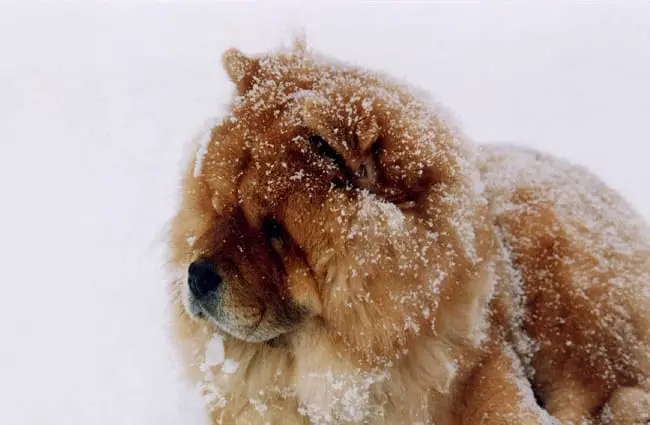
Interactions in a Domestic Setting
Within a domestic environment, Chow Chows interact with other animals primarily as pets. Their naturally reserved and sometimes dominant temperament means that interactions with other dogs or household pets require careful management and early socialization. They can coexist peacefully with other animals if properly introduced and supervised, but their strong prey drive, a remnant of their ancient hunting past, might surface with smaller pets. Their interactions with humans are, as discussed, characterized by loyalty and a degree of independence, forming a unique bond within the human cultural sphere as companions and guardians.
For the Aspiring Zoologist: Deeper Insights into the Chow Chow
For those pursuing a deeper understanding of animal biology and behavior, the Chow Chow offers fascinating insights into canine evolution, genetics, and the impact of domestication.
Genetic Uniqueness
The Chow Chow’s genetic profile is particularly interesting to zoologists. As one of the oldest breeds, its DNA provides clues about the early stages of dog domestication and divergence from wolves. Studies often place Chow Chows in a basal clade, indicating they branched off very early in the evolutionary history of domestic dogs. This genetic distance from most modern breeds makes them valuable subjects for studying canine genetic diseases, breed-specific traits, and the mechanisms of inheritance. Their unique traits, such as the blue-black tongue, offer opportunities to research specific gene expressions and their phenotypic outcomes.

Behavioral Ecology in a Domestic Context
Observing Chow Chow behavior within a domestic setting can also provide insights into behavioral ecology. Their aloofness, strong guarding instincts, and independent nature can be interpreted as remnants of behaviors that were advantageous in their ancestral roles. For example, a dog guarding a temple might benefit from a reserved demeanor towards strangers. Studying how these innate behaviors manifest and are modified by human interaction offers a window into the plasticity of canine behavior under domestication. Research into their communication styles, social hierarchies within a multi-dog household, and responses to environmental stimuli can contribute to a broader understanding of canine ethology.
Encountering a Chow Chow in the “Wild”: Safety and Protocol
While a true “wild” Chow Chow is a misnomer, hikers or individuals in rural areas might encounter a stray or lost Chow Chow. Such an encounter requires caution and responsible action.
Recognizing a Stray
A Chow Chow encountered alone in an unfamiliar environment should be considered a stray. It might be disoriented, frightened, or even injured. Its natural wariness of strangers, combined with potential fear, could make it unpredictable. It is important to remember that even a friendly-looking dog can react defensively if it feels threatened or cornered.

Safe Practices
- Do Not Approach Directly: Avoid making direct eye contact or sudden movements that could be perceived as a threat.
- Maintain Distance: Give the dog ample space. Do not try to pet or capture it yourself, especially if it appears agitated or fearful.
- Observe and Report: Note the dog’s appearance, location, and direction of travel.
- Contact Authorities: Immediately contact local animal control, a humane society, or the police. Provide them with all the details you observed. These professionals are equipped to handle stray animals safely and humanely.
- Avoid Feeding: While well-intentioned, feeding a stray can encourage it to stay in an unsafe area or make it harder for animal control to capture.
Remember, the goal is to ensure the safety of both the animal and yourself by allowing trained professionals to intervene.
Caring for a Chow Chow in Captivity: A Zookeeper’s Guide
For a zookeeper or professional animal caregiver looking after a Chow Chow, understanding the breed’s specific needs is paramount to providing optimal welfare.
Daily Care and Enrichment
- Diet: Provide a balanced, high-quality canine diet, carefully portioned to prevent obesity. Monitor food intake and adjust as needed based on activity level and health.
- Exercise: Chow Chows are not high-energy dogs, but they do require moderate daily exercise, such as a brisk walk. Over-exertion, especially in warm weather, must be avoided due to their thick coats.
- Grooming: Their dense double coat requires regular and thorough grooming to prevent matting and skin issues. Daily brushing is ideal, with professional grooming every few months. Special attention should be paid to the ruff and hindquarters.
- Enrichment: Provide mental stimulation through puzzle toys, scent work, and consistent, positive reinforcement training. While independent, they benefit from routine and predictable interactions.
- Socialization: Continue positive, controlled socialization with familiar caregivers and, if appropriate, other calm animals. Respect their natural aloofness and do not force interactions.
Health Monitoring and Grooming
- Veterinary Care: Regular check-ups are essential. Be aware of breed-specific health concerns such as hip and elbow dysplasia, entropion (inward-rolling eyelids), and gastric torsion (bloat).
- Temperature Sensitivity: Chow Chows are highly susceptible to heatstroke due to their thick coats. Ensure access to cool, shaded areas, plenty of fresh water, and avoid strenuous activity during hot weather. Air conditioning is often necessary in warmer climates.
- Dental Hygiene: Regular dental care, including brushing and professional cleanings, is crucial for preventing periodontal disease.
- Skin and Coat: Beyond brushing, inspect the skin regularly for hot spots, infections, or parasites, especially within the dense fur.
What to Avoid: Avoid harsh training methods, as Chow Chows respond best to positive reinforcement. Do not leave them unsupervised in extreme heat. Avoid neglecting their grooming needs, as this can lead to painful matting and skin problems. Do not force them into overly social situations if they are uncomfortable, as this can lead to stress or defensive reactions.
A Compendium of Fascinating Chow Chow Facts
The Chow Chow is a breed brimming with unique characteristics and historical intrigue. Here is a list of interesting facts that highlight its distinctiveness:
- Ancient Lineage: They are one of the oldest dog breeds, with genetic ties placing them very close to the wolf.
- Blue-Black Tongue: Their most iconic feature, a solid blue-black or purple tongue, is a breed standard.
- Lion-Like Appearance: The dense ruff of fur around their head and neck gives them a majestic, leonine look.
- Bear-Like Gait: Their relatively straight hind legs result in a unique, stilted or “staccato” gait.
- “Puffy Lion Dog”: In China, they are sometimes referred to as “Songshi Quan,” which translates to “puffy lion dog.”
- Historical Utility: Historically, they served as temple guardians, hunters, herders, and even pulled sleds in ancient China.
- Aloof Temperament: They are known for their independent, dignified, and sometimes aloof personality, often described as cat-like in their demeanor.
- Excellent Watchdogs: Their protective instincts and wary nature towards strangers make them superb guardians of their home and family.
- Two Coat Types: They come in two distinct coat varieties: rough (long-haired) and smooth (short-haired).
- Heat Sensitivity: Their thick double coat makes them highly susceptible to overheating in warm climates.
- Unique Wrinkles: Chow Chow puppies are often born with more prominent facial wrinkles that tend to smooth out as they mature.
- Nocturnal Hunters: Their ancestors were sometimes used for hunting at night, a testament to their keen senses.
- Royal Connections: Queen Victoria of England was known to have owned a Chow Chow, contributing to their popularity in the West.
Conclusion
The Chow Chow is more than just a dog; it is a living piece of history, a testament to the enduring bond between humans and canines. Its ancient origins, distinctive physical traits, and unique temperament make it a subject of endless fascination for zoologists, animal lovers, and anyone captivated by the natural world. While its “wild” days are long past, its spirit of independence and loyalty continues to thrive in the domestic sphere. Understanding and appreciating the Chow Chow means recognizing its deep roots, respecting its individualistic nature, and providing the dedicated care that allows this magnificent “lion dog” to flourish. Whether for research, companionship, or simply admiration, the Chow Chow offers a profound connection to the rich tapestry of canine evolution and human culture.






![Red Angus Closeup of a beautiful Red Angus cowPhoto by: U.S. Department of Agriculture [pubic domain]https://creativecommons.org/licenses/by/2.0/](https://animals.net/wp-content/uploads/2020/03/Red-Angus-4-100x75.jpg)

